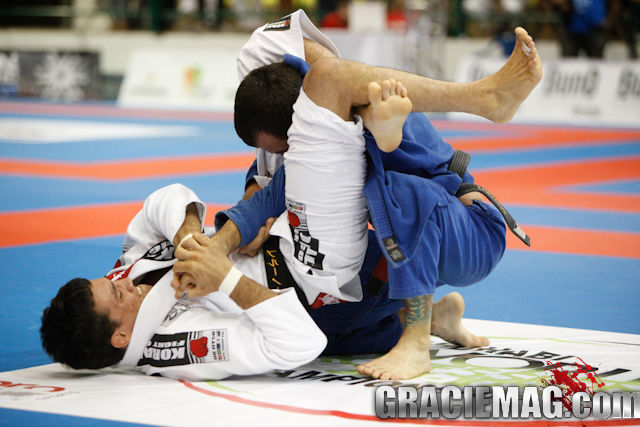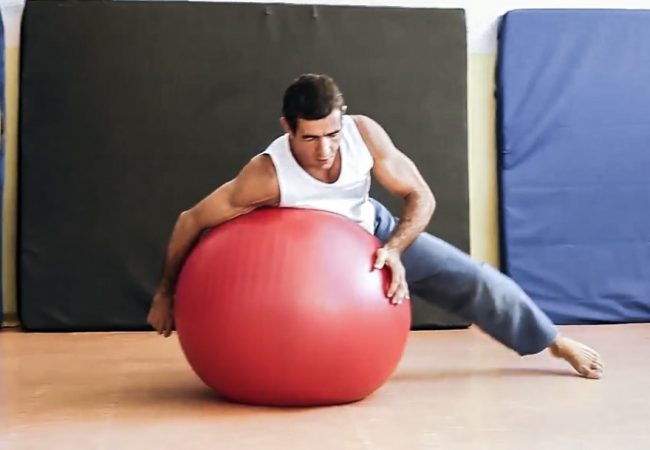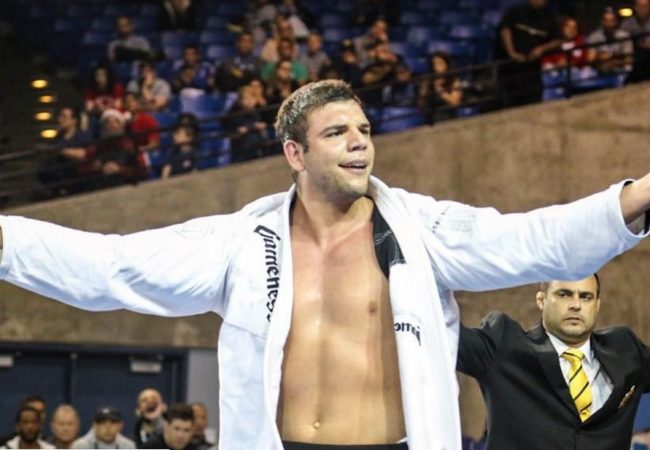
Brazilian champion Bruno Frazatto sinks a triangle. Ivan Trindade
[ Translated from an article by Willian von Söhsten – journalist and student of semiotics; black-belt under Cícero Costha and teacher at Team Nogueira in Ribeirão Preto, Brazil ]
The triangle isn’t a move exclusive to BJJ, or even an invention of ours. But the technique of wrapping an opponent’s neck with the legs has become a sort of calling card of the gentle art. For some reason, our beloved triangle found on Brazilian soil the ideal conditions to spread and be perfected. Some of these reasons? Its effectiveness and power to tame any big attacker.
In a recent article published on the Valente brothers’ website, Julian Ortega remembered the origin of the technique.
In judo it is known as sankaku jime (‘choke through triangle’). It’s hard to say who invented the move, but research points to Master Tsunetane Oda, one of Jigoro Kano’s followers who liked training on the ground the most. Master Oda is also one of the chief names in Kosen judo — a branch more focused on ground fighting, but connected to the Kodokan, like a school within a school.
The triangle likely began its journey in BJJ dojos thanks to the restlessness of Rolls Gracie, who, always hungry for new techniques, may have discovered it in an old judo book.
Grandmaster Pedro Valente was one who attested to that. He said he had never seen the move performed by a member of the Gracie family before the 70s, despite newspaper records showing that it was known by Japanese fighters who lived in Brazil, like Geo Omori, Takeo Yano and Yasuichi Ono.
Ono even fought Helio Gracie in 1935, and the paper that announced the match showed a picture of Ono doing the leg choke in a training session. He and Helio drew.
One of the oldest videos where the triangle is depicted is from 1954. The scene shows Master Tsunetane Oda applying a large number of variations to the technique. It is possible to notice that, in the execution of the move with the back on the ground, the opponent’s arm is not crossed, but straight, ready for an armbar. Many subsequent videos show the triangle being performed in the same way.
Therefore, all signs point to BJJ being responsible for refining the move, as the act of crossing one’s opponent’s arm reduces the space between the shoulder and neck, considerably increasing the pressure applied by the legs around the throat.
The triangle would eventually become famous by the legs of Royce Gracie, when he caught Dan Severn’s neck at UFC 4 in 1994. The 79kg fighter choking his 115kg counterpart caused quite a stir. Since then, the triangle has been a trademark of BJJ fighters worldwide.




